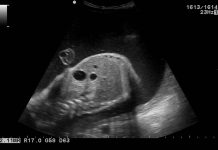A baby is nurtured in mother’s womb for 9 months. Baby is provided with all nutritional and immunological requirements. Also some of the antibodies which travel through placenta protect the baby in its further life. Yes! Really mothers do protect us for life time. We all are aware of this but, do we know about many other benefits a mother can gift her baby; through that physical attachment she shares with the baby, the umbilical cord.
Umbilical cord is the content of placenta along with arteries and veins. It is this cord through which nutrients, antibodies, drugs, and antigens travel.
Role of Umbilical Cord
1. Before birth
As we all know,Umbilical cord acts as passage to deliver nutrients and antibodies to the foetus.
2. During birth
Nowadays doctors use the technique of DDC i.e. delayed cord clamping, in which umbilical cord is clamped and cut with a delay of 1-2 minutes or when the cord stops pulsating. It gives some extra blood to your baby; it has reduced the percentage of anemia in neonates.
3. After birth
Even if much of the blood is delivered to baby some of it is left. And this blood is used for harvesting stem cells.
What are stem cells?
We are formed by the union of just 2 cells, the sperm and the ovum. These cells later differentiate and mature to form all the various types of cells. This differentiation is not a random process it follows a typical pattern. For example, a single pluripotent stem cell divides to form all the contents of blood, which are an erthryoid cell (precursors of RBCs), myeloid cell (precursors of WBCs), as well as megaloblasts (platelets).Thus the cells which are present in baby are highly regenerative. Stems cells are such cells they possess a high regenerative power; they can differentiate and mature into required types of cells. And the reason why they are important is that they manage to have this regenerative power for a longer period than others.
Sources of stem cells-
- Umbilical cord blood
- Tissues of new born- tissue of new born are also highly regenerative, the tissue which can be highly useful are that of liver. But this will make the baby go through an unnecessary process
Why umbilical cord blood?
Umbilical cord acts as passage of nutrients and antibodies to the baby throughout the pregnancy. Thus it is rich in immune cells and stem cells. The cells which are present in abundance in umbilical cord blood are known as haemopoietic (heme=blood; poietic=forming) stem cells thus we can understand they can be used in various blood disorders. Also there are some mesenchymal stem cells which can be used in various disorders where tissues are required.
Uses of cord blood banking
Cord blood banking has been approved by FDA for treating almost 80 diseases some of the common and dangerous are listed below-
1. Haematological disorders
These are diseases of blood formation and blood production. One of the most severe diseases in this family is “aplastic anemia”. Aplastic anemia is the disease in which body stops producing any new blood cells, blood cells are like pipelines in our body, they mainly transport oxygen to whole body. It is untreatable, but with these stem cells we can differentiate them to form new blood cells. And a person can literally get a new life.
2. Leukaemia
Leukaemia is a cancer of tissues which forms the blood cells. It not only hinders the RBC function but also prevents the body from forming WBC. Now RBC and WBC are formed from same precursor cells and the pre cursors are present in the umbilical cord blood. Leukaemias are the one of the most common condition treated with stem cell therapy. If stem cells are not available, bone marrow is transplanted. But stem cells are much more useful because-
a. Faster availability- no need to search for matching donor.
b. Better tolerance since the stem cells are own.
c. Lower incidence of rejection.
d. Low incidence of infection.
3. Metabolic
Metabolic diseases are the diseases which affect the normal functioning of body by affecting various enzymes. Some examples are diabetes, ALD deficiency, G6PD deficiency etc. The key to treatment of these diseases is that, the deficiency of these enzymes can be due to absence of cells producing them. Stems cells can differentiate to those. Most common disease which is treated is ALD deficiency. But parents must keep in mind doctors can replace the cells only if deficiency is due to absence of cells.
4. Neurological
Diseases like alzhiemers and Cerebral palsy are thought to be able to be cured with the help of cord cells. The study about these is still in labs but lots of positive results are found. It is studied that stem cells can mature in neurons as well as the cells which support them (neuroglial cells)
5. Cancer
Mainly solid cancers like neuroblastoma, breast cancers are caused due to uncontrolled proliferation of cells. Our body normally has a mechanism in which old cells die and new ones are born this is a cycle which keeps the cells and in turn all the enzymes and hormones in control. Different cell have different life span for e.g. RBCs have a life span of 120 days while WBC have just 20 days and on the other hand neurons once died are not replaced. In cancer there is mutation which causes loss of this mechanism. Haemopoietic stem cells have all the components of blood they are precursors of RBC, WBC, haemopoietic natural killer cells, these natural killer cells are already present in body which act against bacteria viruses and infected body cells, but cancer overcomes these. In this case haemopoietic natural killer stem cells can be used to kill the cancer cells.
6. Transplants and grafting
The main criteria for transplantation and grafting is the matching of blood group and some important proteins which helps body for identification. Our body has a mechanism by which it identifies its own cells and foreign cells and thus it fights against the foreign cells. When we transplant a graft from other person who is a perfect match, there are still some small proteins by which body can identify the owner, if the body senses a foreign tissue, it immediately attacks it, and this is known as “graft vs. host reaction”. So to prevent it, we keep the recipient on life time immunosuppressant drugs. If a person has their own cells available for grafting then it will be the best thing for them. Also for their relatives, the probability of match will be high, reducing the probability of graft vs. host reaction.
7. Immunological diseases
some viruses attack directly our immune system. Thus reducing our capacity to fight any of the infections back. In these cases we can use the haemopoietic stem cells which can differentiate to form t-cells and b-cells (these are cells which are responsible for the immunity.)
Benefits to family
Umbilical cord stem cells are a perfect match for the same person. But they have an increased chance of matching with family members. Siblings have a chance of 25% perfect match, and 50% partial match. Parents who have contributed 50 % of the genes also have a greater chance of perfect match. Also aunts, uncle, grandfather, grandmother have a greater chance of matching.
Procedures of banking
The service provider provides kit for collecting of cord blood. Mother has to take it to hospital where she will deliver the baby. After delivery the umbilical cord is cut normally. After which the blood is collected in vials provided in the kit. It causes no pain or harm to baby or mother. Then you have to call the service provider, they either picks it up within 24 hrs or you have to send it there.
At the bank the blood is tested for purity and infections and then processed. There are various methods for processing; you may ask your service provider which they use. For a general idea, blood is first separated, stem cells and immune cells are extracted from it and then they are preserved.
Expenditure-
There are two types of cord bank
- Public banks – In public bank you don’t need to pay anything for saving your baby’s cord, it runs on a no profit basis. But if you need it then you have to pay. When you donate the cord you lose your rights on it, so there is no guarantee that you will get it when you need, since either it may be donated to some other person or may be disposed due to inadequate facility.
- Private banks- In private banks you have to pay an initial fee and then an amount per year it may range from $90 to $175. Some banks offer a package for 25- 30 years.
Taking these in mind you may choose a better option for you
Some limitations you need to know
- Genetic diseases– If the cause of the disease is genetic then there are lots of chances that even stem cells might have the same genetic defect.
- Compatibility– Yes! They are compatible to the donor, but compatibility to family is a matter of probability. Even though the probability of, matching is really high.
- Expense– Cord banking is not affordable to many of them.
- Treatment– To a same disease there are many number of causes, for e.g. Diabetes which is caused due to deficiency of insulin secreting cells can be cured, but not that which is caused due to genetic causes or due to lack of hormone.
This was some information about umbilical cord banking. As we can see medical field is progressing day by day, now we are able to treat 80 diseases. In future, this number may go in increasing. It is a great discovery which can be used in tackling many diseases. On the other hand, expense and no-guarantee can be the restraining points. I would like to say do not take any decision under any kind of influence, take your own time, think about it, and then take the decision. Wish you a happy parenting!













